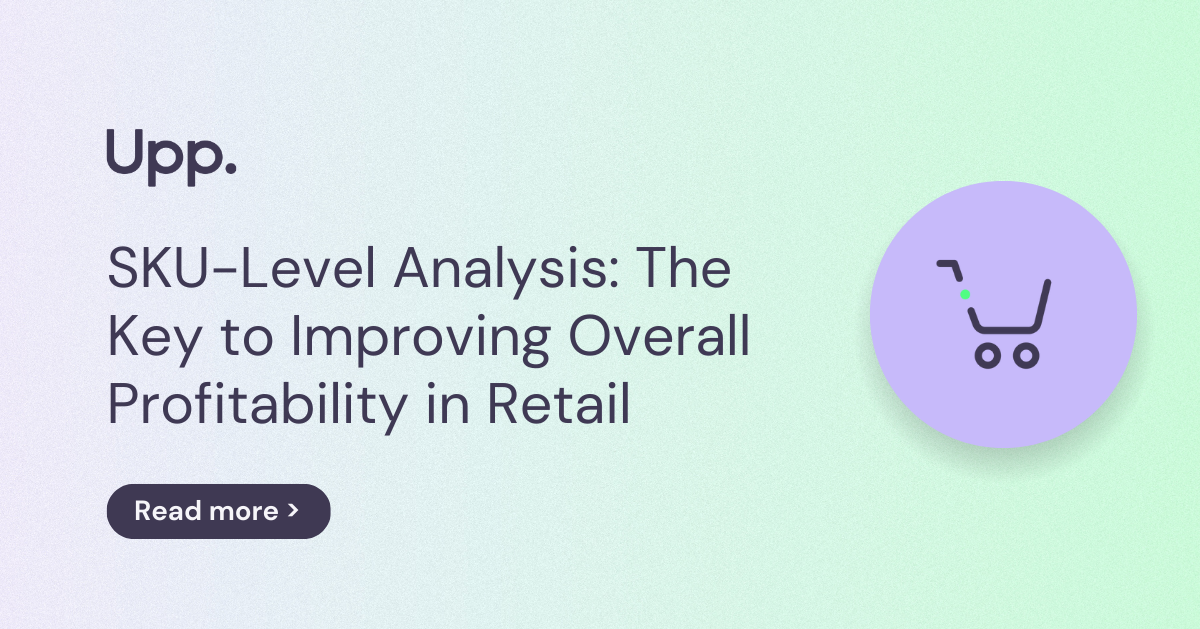3 Profit Pitfalls: How Retailers Undermine Their Own Profitability
Profitability can seem like an elusive objective for some businesses — how do you know that what you’re doing is improving profit margins?
Well, sometimes, it’s the retailer themselves who are undermining their own profitability. Businesses don’t always do the right things — this includes not checking Google Shopping campaign performance regularly, not having access to the right data and not aligning their overall business objectives.
But we’re here to help. In this article, we’ll highlight three common profit pitfalls that businesses miss, and provide solutions to these problems. Let’s get started!
#1 – Businesses aren’t checking their campaign performance
Often, an online retailer’s first mistake is not checking how their Google Shopping campaigns are really performing. In this case, the actions — or inactions — of teams hugely impacts not only the profitability of the campaigns but also the overall business performance.
The solution:
The quick first solution to this problem is ensuring that your teams are regularly reviewing their campaign performance. A way to ensure this is done is to assign it as a role and confirm it’s being carried out correctly. However, this is a time-consuming process and is easier said than done. This is only possible if a retailer has the resources to implement this effectively, and even if an external agency is used, they most likely will only look at high-level metrics, not the granular detail of each campaign — which is vital for a successful profitable campaign.
There is a better way to solving this problem. A platform like Upp can ease the process of reviewing campaign and product performance by providing invaluable insights about campaigns that Google Shopping doesn’t give visibility of. These insights can then be transformed into automated actions points.
Understanding the complete picture of your campaign performances with the support of an intelligent software will help improve your profitability thanks to intuitive, actionable and automated insights.
#2 – Businesses don’t have granular SKU-level visibility over campaigns
Even when businesses are committed to checking their campaign performance, they’re often looking at the wrong data. That’s because Google Shopping generally doesn’t provide the thorough reporting tools needed to have an insightful enough picture of your data. Not having access to these figures will compromise your ability to improve profitability.
You need SKU-level visibility over campaigns in order to really understand how each of your products is performing individually. Your campaign may be performing well overall, but it’s only when you look more closely at it do you realise there might be products in a negative margin. Or there could be best sellers that are out of stock and therefore eating up marketing spend. These kinds of finds — which are hard to find using high level metrics — would need to be removed from the campaign in order to make the most out of your marketing spend. When you have that data to hand, you can make the necessary adjustments to improve your sales and profit margins.
But how can you get your hands on this kind of exhaustive data?
The solution:
Investing in a solution like Upp is your best way to obtain and incorporate SKU-level data into your retail practices. This is because it provides you with the granular product data you need straight from your Google Shopping campaign.
When you have access to this data, you’ll be able to identify underperforming products or product lines. That information will enable you to make the adjustments needed to improve the product’s profit margins and to get the most of your marketing efforts. Upp can even pause the campaign, which is especially helpful if you have a product with high marketing spend yet low stock or is underperforming, This means there is no wasted spend in each campaign.
#3 – Business objectives aren’t aligned with profitability goals
Success looks different to each individual business, which makes it imperative that you don’t forget to hone in on your own individual objectives.
As we’ve identified, there’s a huge amount of data to be discovered but the key is to ensure that all that data is suitably aligned to your business goals as a whole. And to do that, you need to ensure that every department within your business is able to make decisions that also align with those profit and revenue goals.
For example, the digital marketing department may use metrics like ROAS to track campaign performance. While these kinds of metrics are important, the team shouldn’t forget key business success metrics like revenue and profit. Ultimately, it’s difficult to ensure these metrics align, but there is a solution.
The solution:
Aligning your objectives with profitability goals is all about focusing on the data that’s most important to you and your company. When your overarching objectives are united, all of your departments can work towards the same goals of improved profit margins. This reduces the potential for teams to be siloed and unfocused, which ultimately boosts profitability across your business.
A platform like Upp not only provides the specific data you need but also automates the process whilst providing you with full strategic control and visibility. This ensures that your campaigns not only reach optimal performance, but that they also align with the business overarching profit and revenue goals.
Improve your profit margins with the right solution
You’re not alone in struggling to increase profits. Many retailers are facing the same issue and need assistance to efficiently and effectively analyse campaign performance, obtain granular SKU-level visibility and align objectives with profitability goals.
Once you know you’re undermining your own profitability, you can take the steps to change. Invest in a tech solution like Upp to ensure you are easily able to set the right goals and use granular SKU-level data to transform your profit margins.



